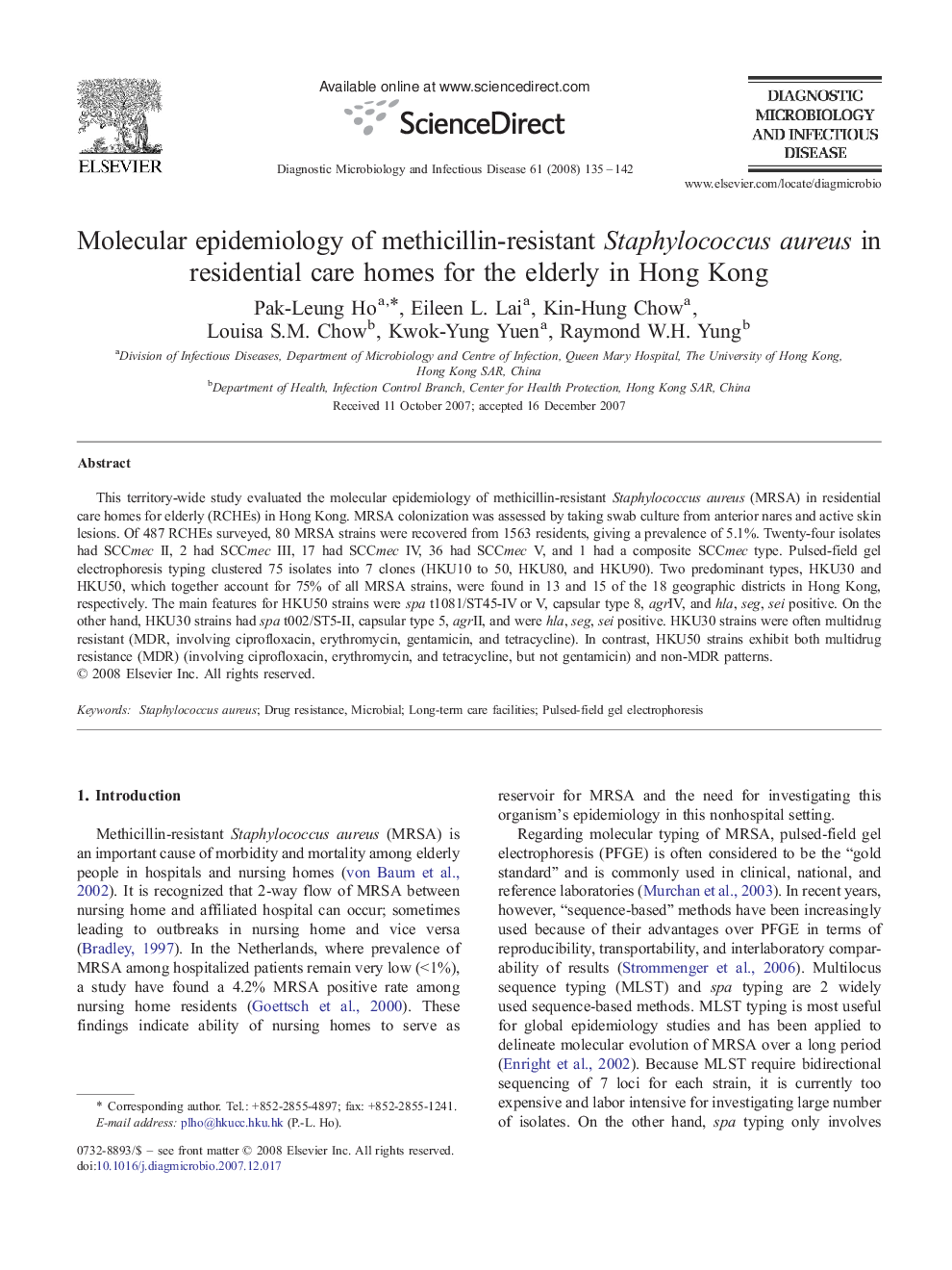| کد مقاله | کد نشریه | سال انتشار | مقاله انگلیسی | نسخه تمام متن |
|---|---|---|---|---|
| 3347739 | 1215982 | 2008 | 8 صفحه PDF | دانلود رایگان |

This territory-wide study evaluated the molecular epidemiology of methicillin-resistant Staphylococcus aureus (MRSA) in residential care homes for elderly (RCHEs) in Hong Kong. MRSA colonization was assessed by taking swab culture from anterior nares and active skin lesions. Of 487 RCHEs surveyed, 80 MRSA strains were recovered from 1563 residents, giving a prevalence of 5.1%. Twenty-four isolates had SCCmec II, 2 had SCCmec III, 17 had SCCmec IV, 36 had SCCmec V, and 1 had a composite SCCmec type. Pulsed-field gel electrophoresis typing clustered 75 isolates into 7 clones (HKU10 to 50, HKU80, and HKU90). Two predominant types, HKU30 and HKU50, which together account for 75% of all MRSA strains, were found in 13 and 15 of the 18 geographic districts in Hong Kong, respectively. The main features for HKU50 strains were spa t1081/ST45-IV or V, capsular type 8, agrIV, and hla, seg, sei positive. On the other hand, HKU30 strains had spa t002/ST5-II, capsular type 5, agrII, and were hla, seg, sei positive. HKU30 strains were often multidrug resistant (MDR, involving ciprofloxacin, erythromycin, gentamicin, and tetracycline). In contrast, HKU50 strains exhibit both multidrug resistance (MDR) (involving ciprofloxacin, erythromycin, and tetracycline, but not gentamicin) and non-MDR patterns.
Journal: Diagnostic Microbiology and Infectious Disease - Volume 61, Issue 2, June 2008, Pages 135–142